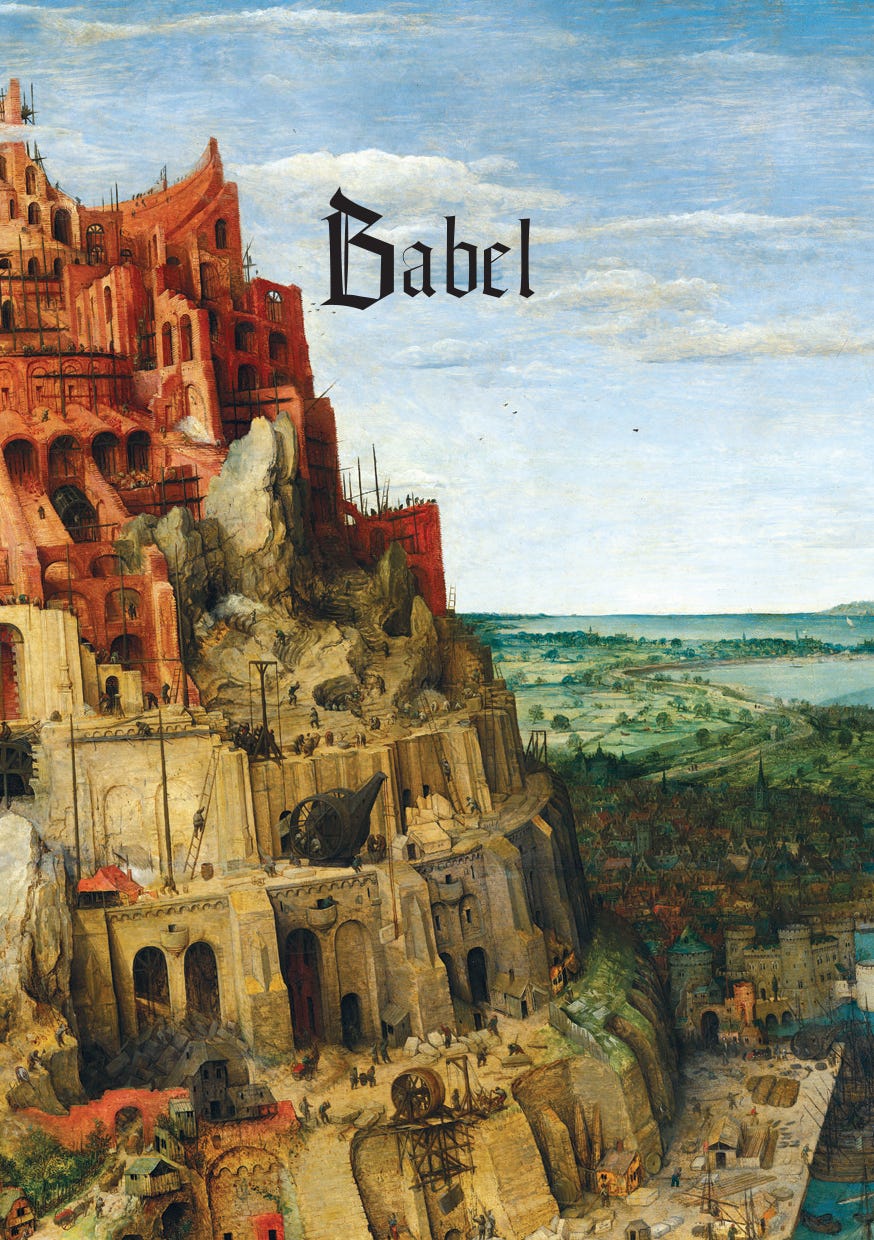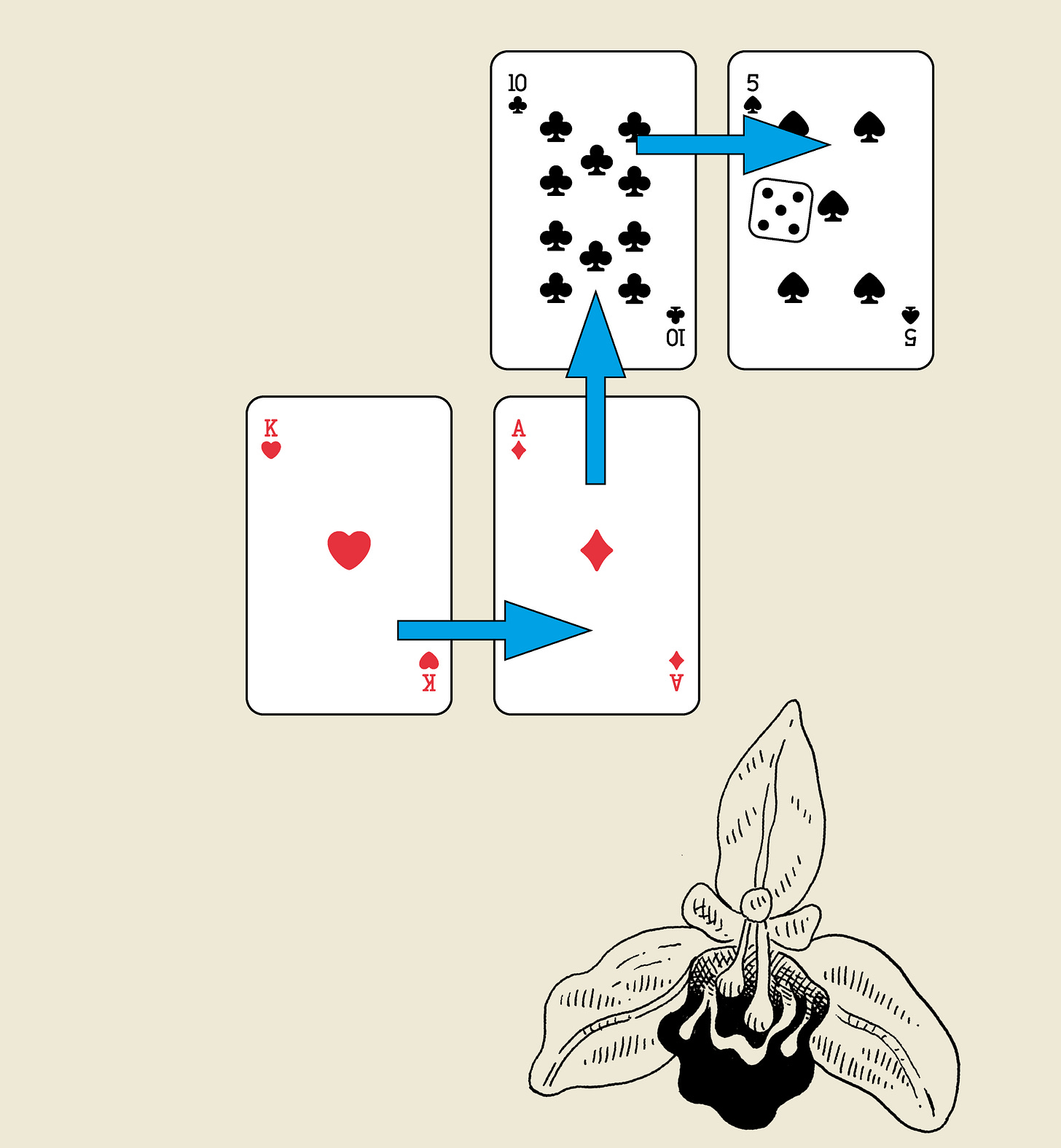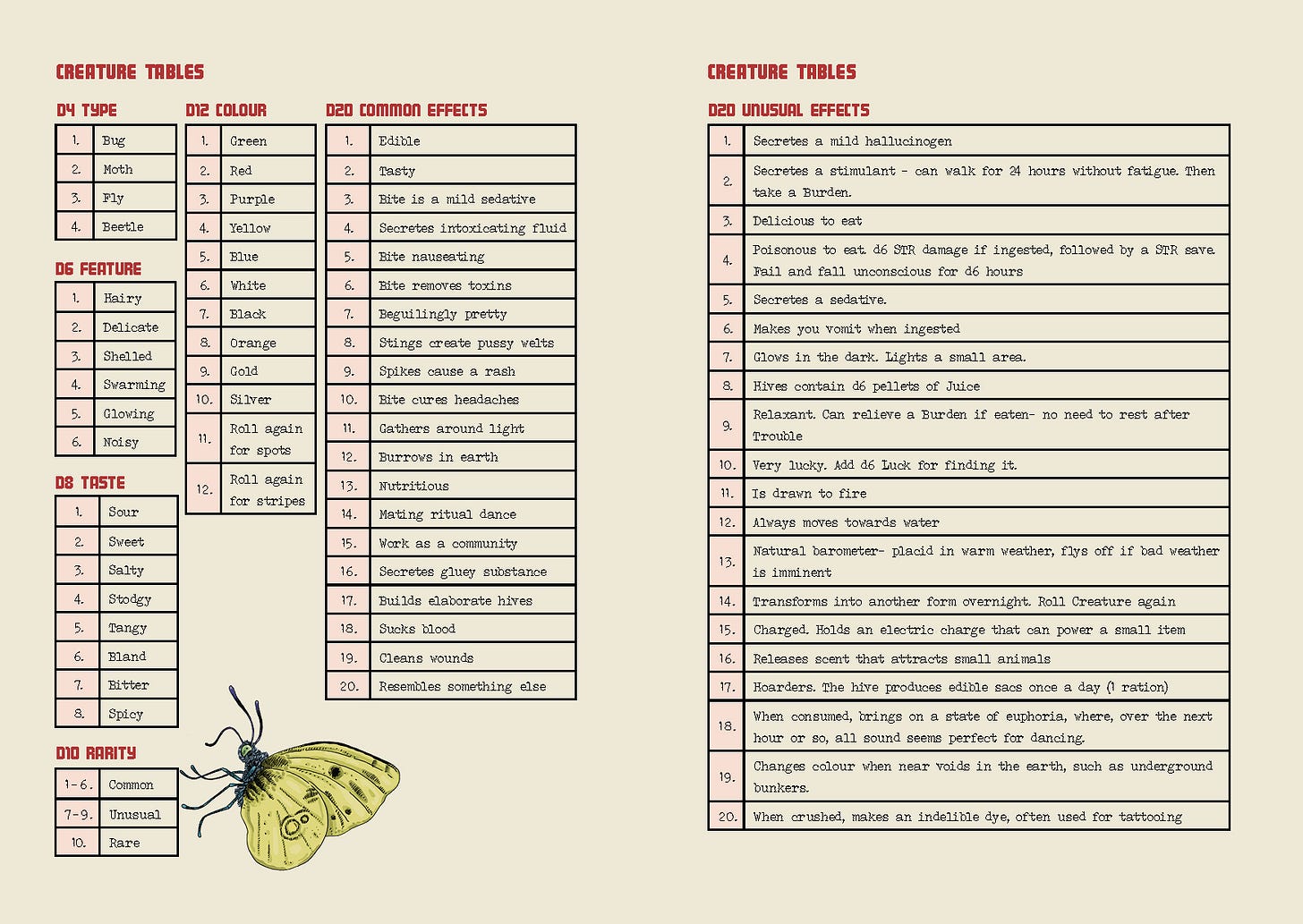So you want to make a solo game?
How to get started
Cover of Babel original image by Bruegel
Solo games
I’ve been making solo TTRPGs for the last five years. They’re a very different beast to a group TTRPG. It’s not about creating a shared mental space with others, they’re more meditative, somewhere between exploring your own imaginative world and solving a series of puzzles left by the maker of the game. In many ways, solo games sit on a spectrum between a board game and journaling, and can even a way of generating free-form writing.
Board game
So to think about the extremes, a pure solo board game is a predetermined set of objects, representing your avatar in the world, and perhaps resources that go up and down. As a player you want to collect a set of objects, or reach a certain place on the game map. I suppose the card game Solitaire or playing something like Outer Rim by yourself could be seen as this end of the scale.
Journaling game
A journaling game, on the other hand, normally provides a lose framework to inspire your own writing. Often these take the form of table of prompts, a series of questions and some way to generate what gets asked next. There are some great examples like The Adventurer and Thousand Year Old Vampire. Lots of people use oracles (Perplexing Ruin’s fine oracle card used here as an example), as a way of playing group TTRPGs alone. Ironsworn is probably one of the most popular games to play this way, along with OD&D and its many variants.
The Middle way
But most solo TTRPGs fit somewhere in the middle of that, using board game elements as a frame for a session of journaling. The game that made me realise how powerful this was as a system was The Wretched by Chris Bissette. It draws you into the narrative in such a clever way, adding rising tension with the use of a Jenga tower, and implicates you in the story by asking you to record your entries into a dictaphone or other audio device. It forces you to confront your own voice, the obvious solitary nature of this game experience. The board game parts, the playing cards, the dice, the tower help give the journaling a structure, a beginning, middle and end.
I don’t think it’s an exaggeration that hundreds of games have now been made using the Wretched & Alone SRD , a document that talks you through how to make a game using The Wretched’s framework. Carta SRD also does a great job at making the act of creating a game like this accessible. I used the Wretched and Alone SRD for Babel back at the beginning of the pandemic, and it really opened things up for me.
Image from Hardcore Ecologist, flower by Daniel Locke
Making a Solo game
I’ve just released a new solo game, Hardcore Ecologist, and I thought I’d talk about the process of getting it into the world.
ECO MOFOS!! is already a solo game, but I know that it’s reasonably complex to get started, certainly compared to the stripped down structure of journaling games. I wanted to create something that was about the joy of discovery, the joy of seeing what’s around the next corner, but keep it in the weird dangerous future of the ECO MOFOS setting. So I decided to build a self-contained adventure that you could play without any of the character mechanics of the main game, that got you straight into the adventuring part.
After some experimenting, using hexes and point crawls, I decided to use cards for travel, where you create your map as you go. It felt satisfying and clear- three of the suits could act as the three biomes, The Wastes, WIlderness and Ruins.
I wanted to track time, to create a sense of urgency. I had a spare suit from the pack of cards, so thought that could be a marker of time- a new card for every day. And you’d know all the time what day you were on if you had that card face up. ECO MOFOS uses 6 Watches in a day, and that maps nicely on a d6, so that became the timer for the action economy. You can do one thing in a Watch- move onto another Card or search for specimens.
Spread for rolling up Creatures in Hardcore Ecologist. Butterfly by Daniel Locke
For the discovery of plants and creatures, I was thinking of games like the original Pokemon or Final Fantasy videogames where you grind going across certain areas to find different rare instances. So for this part I used a dice drop, something used extensively in The Black Hack - it’s always fun to roll up a bunch of dice and let them fall, with each seperate dice type refering to a different table. I tackled the idea of rarity by assigning it to one particular die, the d10, so that you can instantly see if you’ve got something unusual. On a 10 it’s a rare specimen, so hopefully during one playthrough people will get a few rare specimens, alongside a lot of other strange things.
So you’re building the map, a bit like a freeform Carta game, and rolling for surprising things like Black Hack, but I needed a narrative reason for the time to be limited - You’re part of a community who are leaving in ten days - you’re trying to help them with your discoveries. Coming up with this made me think that it’d be nice if you could actually find the goal of the main ECO MOFOS game, The Glade, a safe space for a new community. So I added the Queen of Hearts into the deck - a 1-in-40 chance to find the Glade, another satisfying sub-goal in the game.
As you can see, the narrative and the mechanics fed each other- certain ideas arise because a mechanic is possible, and sometimes the narrative itself inspires mechanics within the game. Creation is an organic process. Follow where it leads. And then test and iterate. When it feels right, it’s probably done. But show it to a few friends first. Sometimes they spot things, especially lack of clarity of instructions, that you just become blind to.
Making your own Solo game
Both Wretched & Alone SRD and Carta SRD are great starting points, but if you want to use Hardcore Ecologist as a base, this is what you need to do-
Assign a different type of place or type of action to each of 3 Suits.
Write 13 evocative entries for each of the 3 suits. This is the heart of the setting of the game, what the player will picture as they play.
Use one Suit to track time- maybe it’s minutes, hours, days, weeks, years, millenia.
Write some dice drop tables-
d4 - Large categories of things (Animal/vegetable/mineral/other)
d6 - A general feature (I used appearance, furry/spikey/shiny etc)
d8 - Another general feature (I used Taste spicy/sour/sweet…)
d10 - Rarity. I set it for 1-6 Common, 7-9 Unusual, 10 Rare)
d12- Another feature - (I used Colour, with entries for combining)
d20 - The real individual flavour. 20 entries that add spice to the description, and maybe some mechanical benefit, like getting rid of fatigue or healing.
Try it out and see how it works. Iterate and then let someone else play it. Or just share it with me, I’d love to try it out.





Great write-up, but I am uncorfortable to classify Ironsworn as "journaling game", since it's one of the most full-fledge solo RPG out there.
I design a lot of solo games nowadays, and my favorite frameworks are Carta and Breathless. I often mix-up the two, they work quite well together
I've been writing a game for a few years now, it's not a solo game, but recently I've decided to bring the concepts of the GM beeing a player too and a game needs to be fun for the GM too to it's logical extreme.
GM prep is going to be codified as solo play.
The other way I could have gone was low prep or everyone at the table adds to the world, but I love intricated consistent worlds that can be achieved only through prep.
I'm pretty new to solo games and I was looking for things to read up, so I'm very glad I came across this, it's a very helpful start!